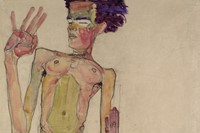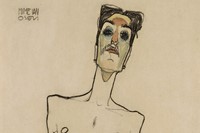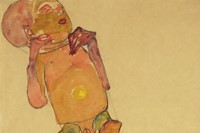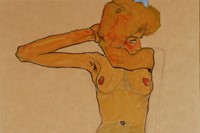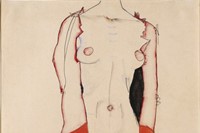In celebration of The Courtauld Gallery's wonderful exhibition of his nude portraiture, we present five facts about Egon Schiele
In his twenty-eight years on earth, Egon Schiele produced some of the most radical depictions of the human figure in modern times. Through his highly expressive, utterly uncompromising portraiture, he shoved away the parameters of self-expression, procreation, sexuality, eroticism and mortality – prevalent concerns in the socially and psychologically charged atmosphere of pre-war Vienna – in a breathtakingly original manner.
"Erotic works of art are also sacred" — Egon Schiele
During his lifetime – cut tragically short by Spanish flu – Schiele caused uproar and outrage with his raw, unidealised approach to the nude, and in spite of his famous claim that "erotic works of art are also sacred,” many of his explicit depictions were denounced as pornographic filth. Now however, his extraordinary drawings and watercolours of male and female nudes are hailed as masterpieces, credited with having the reinvented the subject for the 20th century.
A diverse range of these striking and technically brilliant works are currently on display at The Courtauld Gallery – from pregnant women to newborn babies, to tantalising prostitutes and haunting self-portraits – in what is the UK’s first major exhibit devoted to Schiele for over twenty years. Here, in celebration of the show, and the great man himself, we present five facts about the renegade artist.
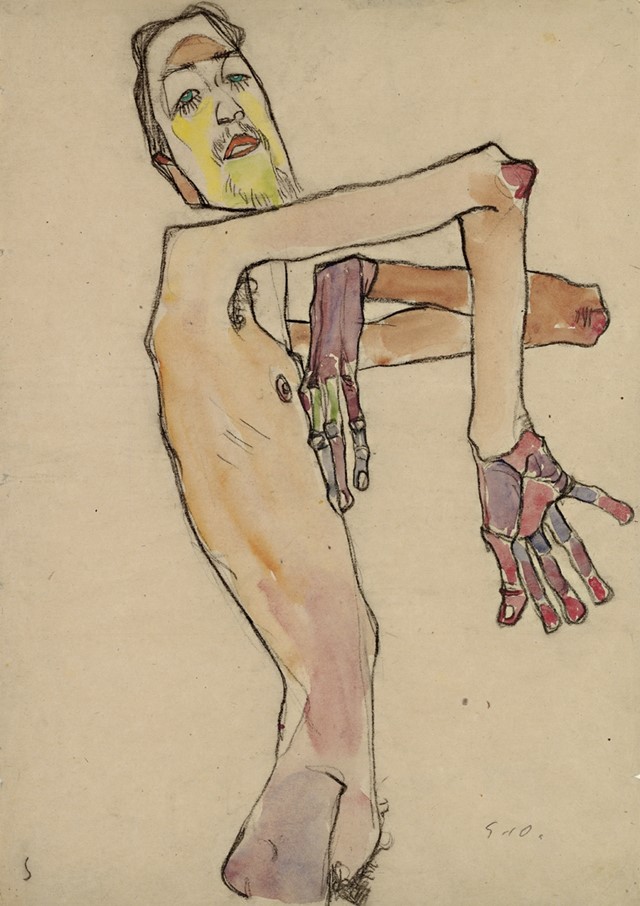
1. Egon Schiele was an art school drop out...
A precocious talent, Schiele was just 16 when he took up studying at the Vienna Academy of Fine Art. However, he disliked the rigid structure the academy imposed, veering towards a more avant-garde approach and seeking inspiration in the work of Oskar Kokoschka and Gustav Klimt, the latter of whom would become his mentor. Schiele openly rejected the principles touted by his professors, instead teaming up with a number of his classmates and likeminded individuals to form the Neukunstgruppe (New Art Group) and dropping out of the academy in 1909. Upon hearing of Schiele's decision to quit, his drawing teacher reputedly said to him, "Don't tell anyone I taught you."
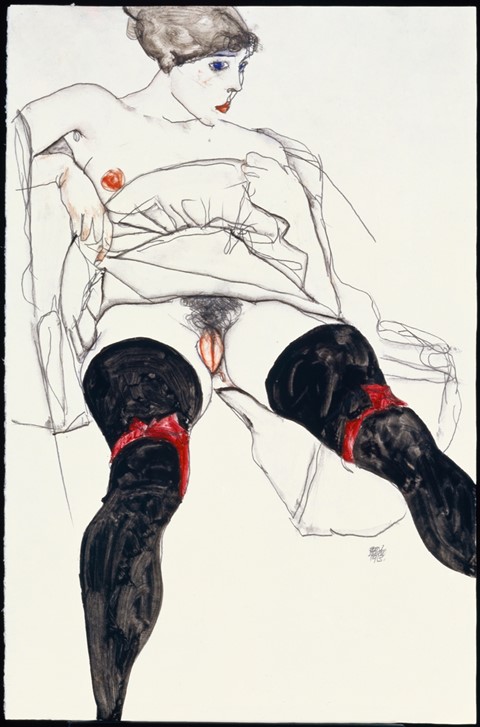
2. Egon Schiele was a poet...
Schiele wrote a number of poems in his short lifetime, which, while not of quite the same calibre as those of other renowned Expressionist poets of the time – Georg Heym, Gottfried Benn et al – are still a vivid supplement to Schiele's painterly vision. Many of the titles denote an artist's approach, such as 'sketch for a self portrait' or 'self portrait', as do the frequent references to colour. Indeed in one poem, titled Visions, the line, ‘The white pallid girls showed me their black legs and red garters and spoke with black fingers …’ immediately conjures up a Schiele painting as if one were describing it.
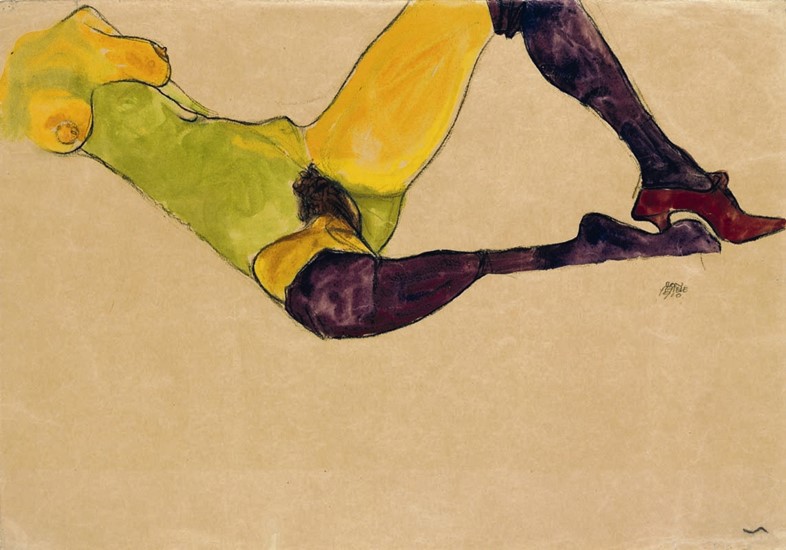
3. Egon Schiele was promiscuous...
Schiele was a notorious womaniser, the way he posed and dressed his models a clear demonstration of his fascination and appetite for the female form. He once documented no fewer than 180 female "visitors" passing through his studio within an eight-month period. Unsurprisingly then, when he married Edith Harms in 1915, his new wife expressed a distain for Schiele's use of other models – albeit that she herself felt awkward modelling, coming from a strict Protestant background. Schiele remained faithful to Edith for the first couple of years, during which they spent much time (in Harms' words), "pressed against each other as closely as possible so as to forget the world around [them]." But as Harms began to gain weight, no longer fitting Schiele's lean and fragile ideal, the artist returned to using other models, including Harms' more free-spirited sister Adele who later admitted that their relationship was not as chaste as it should have been.
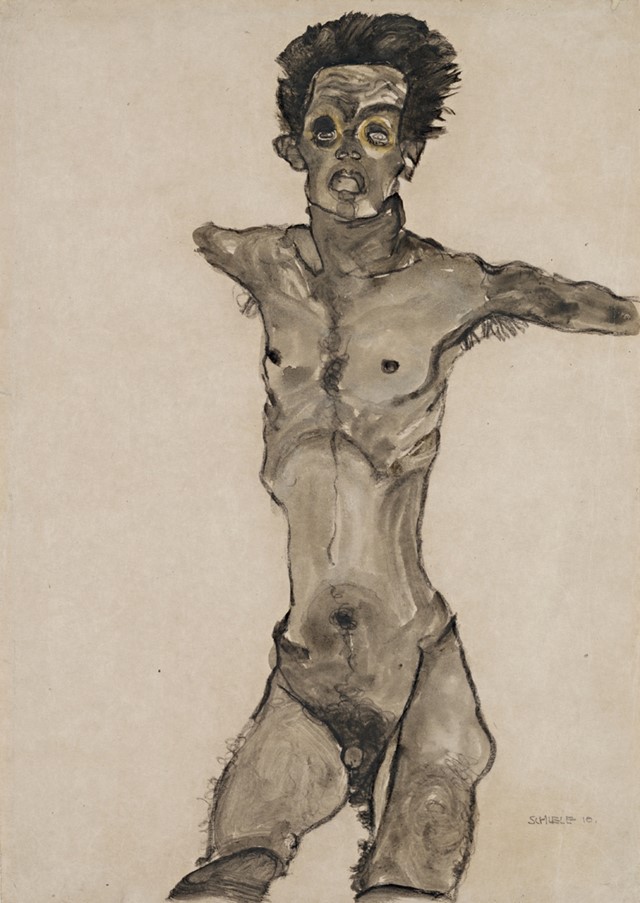
4. Egon Schiele was briefly jailed...
In 1912, Schiele was accused of seducing a minor – the runaway daughter of a navel officer who had been seen, along with a number of other children, lingering outside his studio. Although the main charge proved unfounded and was subsequently dropped, Schiele was forced to spend 24 days in jail for exhibiting erotic material where minors were present. While in prison, Schiele created a series of 12 paintings evoking the trauma and discomfort of being locked in a cell.
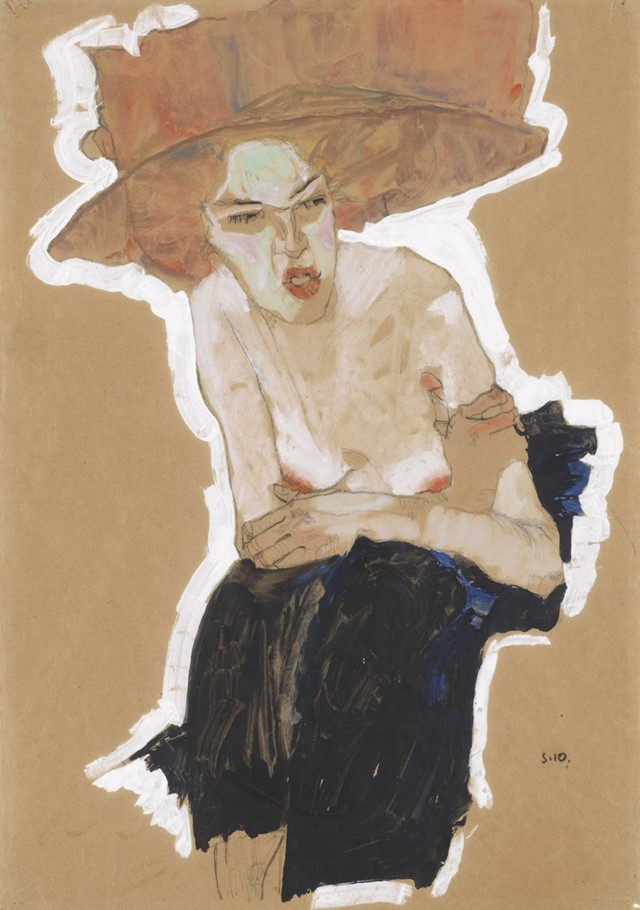
5. Egon Schiele was a psychoanalytical painter...
Schiele's was the age of Freud and psychoanalysis and, just as Freud sought to unearth the unconscious as the root of human psychology and abnormality, in his portraiture Schiele explored the psychic depths of his subjects through repeated confrontation with the body, sexuality and mortality. Many scholars have argued that Schiele’s art, particularly his self-portraits, was an inward-looking practice, intent on reflecting a psychological state of being. His emaciated, angular figure often appears tortured, bristling with an inner tension.
Egon Schiele: The Radical Nude is at The Courtauld Gallery until January 18.
Research by Gillian Hopper

